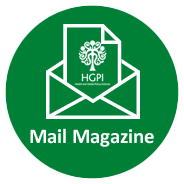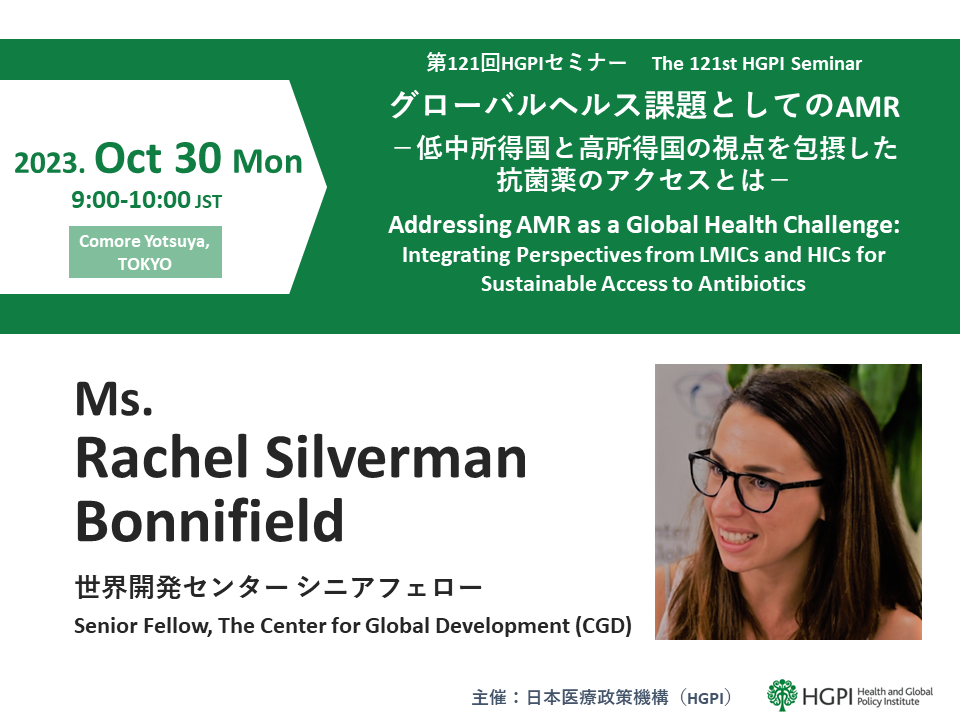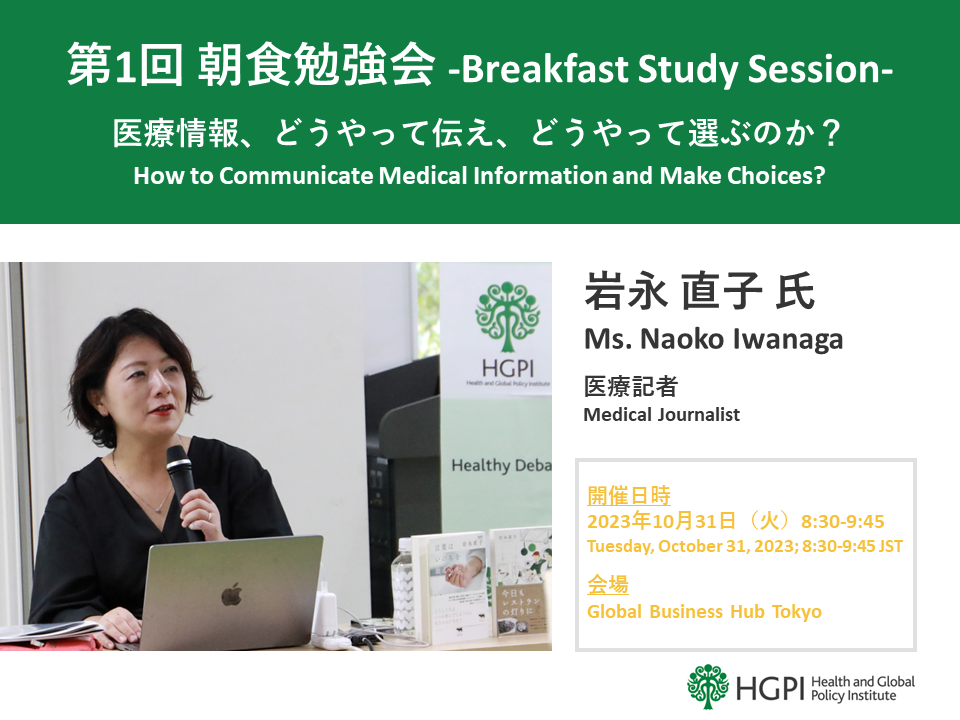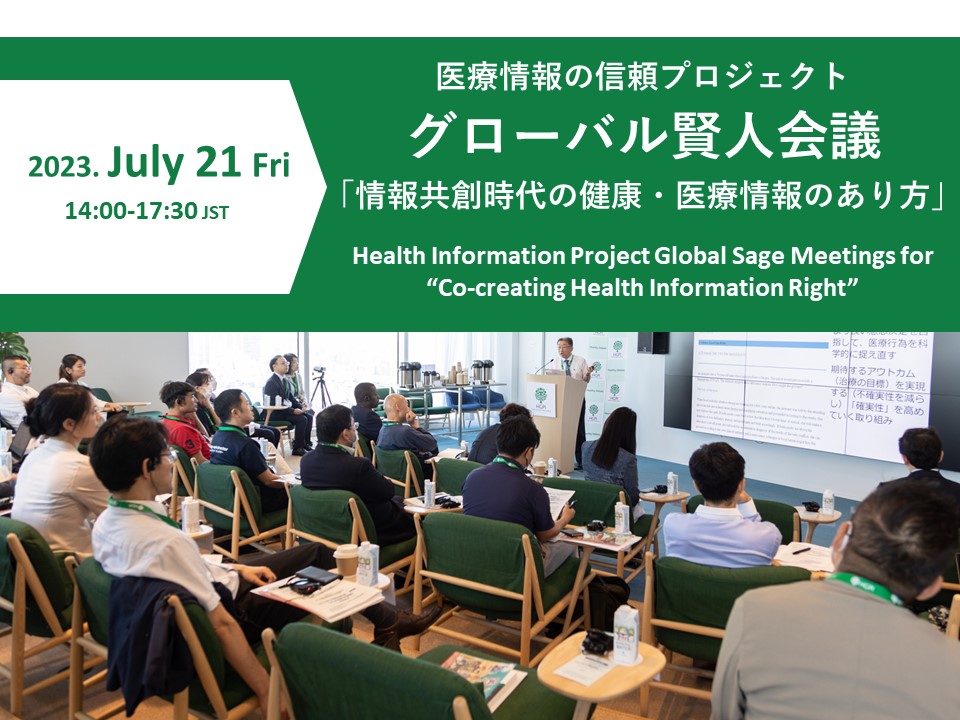[Event Report] The 122nd HGPI Seminar – Keeping Pace with Growing Diversity of Health Information in Health Communication (December 19, 2023)
date : 2/28/2024
Tags: Future of the Health Care System, Health Information, HGPI Seminar
![[Event Report] The 122nd HGPI Seminar – Keeping Pace with Growing Diversity of Health Information in Health Communication (December 19, 2023)](https://hgpi.org/en/wp-content/uploads/sites/2/hs-122-top_JPNENG-1-1-1.png)
For the 122nd HGPI Seminar, we hosted Professor Keiko Yamada, who serves as Associate Professor at Saitama Prefectural University and as Principal Investigator of the Project on Disseminating Medical Research Results in an Easy-to-Understand Manner. Professor Yamada spoke about the nature of health communication in an age of growing diversity in health information.
<POINTS>
- Even if two people are using the same words, the contexts for those words in real-world healthcare settings or in medical research differ from when they are used in general society. This means words can take on different meanings. The responsibility of bridging gaps in meaning falls to people serving in healthcare who can understand both sides.
- As previously noted, even when using the same words, health professionals and members of the general public sometimes have different intended meanings. Furthermore, Japan is a high-context society where people rely on unspoken understanding. These two elements make health information in Japan more complex. Having health professionals and members of the general public come closer to each other, reach a mutual understanding, and safely co-create information will be important in achieving smooth and effective communication between them. To help people reach that mutual understanding, Professor Yamada’s team has prepared guidelines on communication titled, “The Guidebook on Disseminating Medical Research Results in an Easy-to-Understand Manner”.
Differences in context between health professionals and the general public
Certain words that are used by the general public can take on different meanings when used by health professionals in health communication. For example, when using the term “standard treatment” in Japanese, health professionals are referring to treatments “that are based on scientific evidence and are the most effective option that is currently available.” When looking up “standard” in a Japanese dictionary, however, it is defined as “a benchmark or an example” or “common.” As we can see, there is a difference in how people usually perceive the term “standard” and how it is used in the term “standard treatment” in the context of medicine and healthcare in Japan. Focusing our attention on these differences, last year, we compiled guidelines on how to convey information on medical research findings in an easy-to-understand manner.
Medicine is a branch of science, and like most branches of science, specialists in this field use a context that has developed independently from the one used by the general public. As such, health communication requires that we keep those differences in mind as we work to build common understanding. In particular, when participation from citizens is necessary, steps must be taken to fully bridge the gaps in awareness toward the contexts used by health professionals and the general public before any final decisions are made. I believe that doing so will be the first step in achieving smooth health communication.
Communication grows complex when a medical context crosses with Japan’s high-context society, where unspoken understanding is common
“Context” is generally taken to mean something that refers to backgrounds, circumstances, or settings, but it also includes understandings or feelings that cannot be fully expressed in words. For example, when a married couple understands each other well, they are in a high-context state that allows them to communicate over their shared background or context. In this state, they can understand the other party’s intentions without the need for it to be put in explicit terms. The exact opposite situation – in which two people feel like they are communicating when they actually do not understand each other at all – can also occur. In high-context societies, there are times when information that is thought to be conveyed without making it explicit does not actually get across, and this can result in unpredictable events.
Japan is a high-context society where people find it relatively easy to convey ideas without having to rely on words. There are also predetermined formats that scientists and health professionals use to share information (such as when presenting research designs or evidence) that help to foster mutual understanding even when details are left out. As a result, extremely high context communication takes place in the worlds of science, medicine, and healthcare. The combination of society’s presumption that meaning can be conveyed without using words when health information is transmitted in Japan and the unique context used when specialists like scientists and health professionals transmit information may have resulted in a form of communication that is very complex and difficult to understand.
The characteristics of channels for obtaining health information have changed over time
Channels for obtaining health information are becoming more diverse and expansive. In the past, medical researchers bought articles and books to keep up-to-date on the latest information in health and medicine. Today, that information is very open and can be viewed by anyone over the internet. People also have increasing opportunities to share information using tools like social networks.
The utilization of personal health data outside of health facilities
In the past, most personal health data was held in medical records and was kept within health institutions. Today, however, as seen in the use of real-world data and personal health records (PHRs) outside of health institutions, personal health data is expanding in scope, and its use as a form of health and medical data is predicted to continue growing in the future. In response to this change, discussions on who owns the information held in electronic medical records are being held repeatedly. The current thinking is that the information in electronic medical records is the most personal form of information and that it belongs to the individual. However, electronic medical records are currently considered to be the property of health institutions which are also charged with managing and preserving them, so the nature of this information is highly unique. While the management of one’s own health information is gradually being passed off to the individual, there are high hurdles to allowing patients to hold and manage their own medical records, making it impractical. It is urgent that we establish a system that enables people to manage individual health data.
In recent years, the Government of Japan has been promoting the widespread adoption of PHRs. PHRs are a form of health data for storing information on an individual’s health and physical condition. They may seem like a relatively new topic of discussion, but Japan has one long-standing type of PHR that it can be proud of: the Maternal and Child Health (MCH) Handbook. While not digital, these handbooks are a representative example of a PHR that allows parents to track their child’s weight and health status and that provides a portable option for storing information on a child’s growth and vaccination history. Even after someone reaches adulthood, their MCH Handbook can serve as a record of their vaccination history and be used to track their health before birth and as an infant. The MCH Handbook provides one good example of people managing health information on their own and, in the near future, this sort of culture around self-management may become more common. The Government is also encouraging more widespread use of PHRs and is advancing efforts to more effectively manage and utilize health information.
Global growth in the health tech sector has been remarkable. Worldwide, the market for healthcare apps is estimated to be worth USD$10.4 billion while the mobile health market is estimated to be worth USD$74 billion. This sector also has an extremely high growth rate of about 20%. In Japan, the markets for wearable devices and digital technologies are expanding rapidly. Progress is being made in research on healthcare apps and the number of meta-analyses on their effectiveness is increasing. Using the results of these efforts, we are gradually building up knowledge regarding the usefulness of healthcare apps. Our knowledge in this area is predicted to continue growing in the future.
Unique aspects of health information and items to keep in mind when handling it
The essential purpose of medicine and healthcare is to address health issues, and while people tend to believe that the more information that is provided, the better, people on the receiving end of information have the unconscious tendency to pick up and discard information based on their current feelings or circumstances. The potential psychological impact of information on recipients must be taken into consideration when communicating health information. How people receive information and the psychological impact of that information varies from person to person, so particular care must be given to communication.
Furthermore, in healthcare, information and procedures can have a direct impact on human life, making it an area with an extremely narrow tolerance for trial and error. In this regard, healthcare is more demanding than other sectors. This makes accuracy a vital aspect when communicating health information.
Awareness toward science and medicine among Japanese people
In general, people in Japan think answers from science are guaranteed. When focusing on information accuracy, this firmly rooted preconception must be taken into account. As medicine is a branch of science, people tend to think of it as something that has already been perfected, and this leads people to believe that errors are unacceptable. In reality, based on the research that is conducted day by day, new knowledge and techniques are being discovered and updated over time. During the COVID-19 pandemic, for example, specialists shared their latest findings regularly in the media as they learned more about the virus. However, those specialists were criticized for presenting information that was different from what had been shared before. In this manner, people in Japan have the strong impression that medicine and healthcare are finished products. When transmitting information, steps must be taken to overcome this preconception in society’s subconscious.
Overview of “The Guidebook on Disseminating Medical Research Results in an Easy-to-Understand Manner”
Based on the idea that narrowing the gap between the contexts used by health professionals and by the general public even slightly and helping them know each other better will lead to better decision-making within health communication, our project developed a guidebook on providing easy-to-understand explanations on findings from medical research.
The guidebook is mainly for people responsible for transmitting health information and focuses on a formal writing style that is well-suited to press releases and other such publications. When creating the Guidebook, we incorporated various opinions from experts as well as members of the general public.
When creating the Guidebook, we sorted our questions into two categories: basic and advanced. The basic questions dealt mainly with language usage. The advanced problems, however, took into account more complex elements like the statistics and research designs used in medical research. To draft the basic questions, we created and analyzed corpora (large-scale linguistic text data) and performed a survey based on our findings. When drafting the advanced questions, we conducted a literature review of publications from Japan and overseas. Then, based on the findings of that review, members of our research group held discussions that incorporated multiple perspectives. Finally, all of our discussions were summarized and compiled into checklists and glossaries.
The checklist is divided into two sections: basic and practical. The basic section is for creating easy-to-understand documents and provides advice about writing style, readability, and overall visual clarity. In addition to medical research, the basic section is intended to be useful for scientific research and all varieties of reference materials. The practical section focuses on key points that are unique to medical research.
As for terminology, as described above, the Guidebook also includes explanations of terms selected according to the corpora (the database of language resources). Specifically, two corpora were created: one with articles for specialists in medical research and one with articles for the general public. After extracting nouns using morphological analysis, 33 word groups and 68 words were selected after being deemed important and worthy of explanation by multiple team members. Then, an online survey on understanding toward that terminology was conducted among 3,000 people (2,400 members of the general public and 600 specialists). Terminology explanations were compiled using all of the items listed above.
In the process of compiling the Guidebook, it became clear to us that the same sentences would be interpreted in different ways by health professionals and the general public. As mentioned above, these differences in perception occur due to the phrases being used in different contexts, and I think people who disseminate health information must first understand the contexts of both these parties before conducting research. I hope our Guidelines will assist them in doing that.
[Event Overview]
- Speaker: Prof. Keiko Yamada (Associate Professor, Saitama Prefectural University; Principal Investigator, Project on Disseminating Medical Research Results in an Easy-to-Understand Manner)
- Date & Time: Tuesday, December 19, 2023; from 18:30-19:45 JST
- Format: Online (Zoom Webinars)
- Language: Japanese
- Participation fee: Free
- Capacity: 500 participants
■ Speaker Profile:
Keiko Yamada (Associate Professor, Saitama Prefectural University; Principal Investigator, Project on Disseminating Medical Research Results in an Easy-to-Understand Manner)
Professor Keiko Yamada graduated from the University of Tokyo Graduate School of Medicine and Faculty of Medicine. After serving at departments of orthopedics and emergency medicine in Tokyo, Professor Yamada completed a Master of Medical Administration degree at Tokyo Medical and Dental University. She then moved abroad to study at the Dana-Farber/Harvard Cancer Center Health Communication Core. After returning to Japan, Professor Yamada served at the University of Tokyo Hospital Department of Orthopaedic Surgery and was appointed Visiting Researcher at the University of Tokyo Department of Medical Informatics and Economics. She then studied at Harvard T.H. Chan School of Public Health and served in the Department of Healthcare Information Management at the University of Tokyo Hospital before assuming her current position. Her specialties and qualifications include orthopedic surgeon, Doctor of Medicine, and Master of Public Health and Health Policy. She has been operating an online guide to women’s health called “All About” since 2001.
Top Research & Recommendations Posts
- [Research Report] Perceptions, Knowledge, Actions and Perspectives of Healthcare Organizations in Japan in Relation to Climate Change and Health: A Cross-Sectional Study (November 13, 2025)
- [Research Report] The 2025 Public Opinion Survey on Healthcare in Japan (March 17, 2025)
- [Policy Recommendations] Mental Health Project: Recommendations on Three Issues in the Area of Mental Health (July 4, 2025)
- [Policy Recommendations] Developing a National Health and Climate Strategy for Japan (June 26, 2024)
- [Research Report] The 2023 Public Opinion Survey on Satisfaction in Healthcare in Japan and Healthcare Applications of Generative AI (January 11, 2024)
- [Policy Recommendations] Recommendations on Strategic Investments in Policies for Brain Health to Revitalize Japan: Hopes for the New Administration (December 1, 2025)
- [Policy Recommendations] Reshaping Japan’s Immunization Policy for Life Course Coverage and Vaccine Equity: Challenges and Prospects for an Era of Prevention and Health Promotion (April 25, 2025)
- [Announcement] HGPI Endorses the “Belém Health Action Plan” (November 14, 2025)
- [Announcement] HGPI Joins Global Green and Healthy Hospitals (August 1, 2023)
- [Research Report] AMR Policy Update #2: WHO’s First Report on Fungal Infection—Bridging the Gap Between Clinical Practice and R&D
Featured Posts
-
2025-12-09
[Event Report] Special Seminar “Rising to New Challenges in Health Sciences for Future Society: Novel Developments in the Field of Epilepsy in Japan and Globally” Belgium Pavilion Special Seminar, World Expo 2025 Osaka, Kansai (September 18, 2025)
![[Event Report] Special Seminar “Rising to New Challenges in Health Sciences for Future Society: Novel Developments in the Field of Epilepsy in Japan and Globally” Belgium Pavilion Special Seminar, World Expo 2025 Osaka, Kansai (September 18, 2025)](https://hgpi.org/en/wp-content/uploads/sites/2/HGPI_20250805_mental-health-expo-eyechatch.png)
-
2025-12-11
[Event Report] Core Components of Universal Health Coverage (UHC): Achieving “Healthcare Without Financial Hardship” in Asia-Pacific and Japan (December 5, 2025)
![[Event Report] Core Components of Universal Health Coverage (UHC): Achieving “Healthcare Without Financial Hardship” in Asia-Pacific and Japan (December 5, 2025)](https://hgpi.org/en/wp-content/uploads/sites/2/HGPI_20251210_Core-Components-of-Universal-Health-CoverageUHC-top.jpg)
-
2025-12-12
[Registration Open] Meaningful Involvement Promotion Project Urgent Symposium “The New Takaichi Administration and Central Social Insurance Medical Council Reform – Ensuring Patients’ Voices are Heard” (January 22, 2026)
![[Registration Open] Meaningful Involvement Promotion Project Urgent Symposium “The New Takaichi Administration and Central Social Insurance Medical Council Reform – Ensuring Patients’ Voices are Heard” (January 22, 2026)](https://hgpi.org/en/wp-content/uploads/sites/2/HGPI_20251208_urgent-symposium-1.png)
-
2025-12-12
[Registration Open] (Webinar) The 140th HGPI Seminar “Early Detection to Reduce COPD Disease Burden: Connecting Clinical Frontiers with Health Policy” (January 27, 2026)
![[Registration Open] (Webinar) The 140th HGPI Seminar “Early Detection to Reduce COPD Disease Burden: Connecting Clinical Frontiers with Health Policy” (January 27, 2026)](https://hgpi.org/en/wp-content/uploads/sites/2/hs140-top.png)
-
2025-12-16
[Discussion Points] Policy Dialogue “Considering Comprehensive Genomic Profiling from the Perspective of Patient Access: Utilizing the Medical Service Fee Reimbursement System and the Mixed Medical Services Program to Meet the Needs of Today” (November 28, 2025)
![[Discussion Points] Policy Dialogue “Considering Comprehensive Genomic Profiling from the Perspective of Patient Access: Utilizing the Medical Service Fee Reimbursement System and the Mixed Medical Services Program to Meet the Needs of Today” (November 28, 2025)](https://hgpi.org/en/wp-content/uploads/sites/2/eyecatch_Policy-Dialogue_Discussion-Points_20251128.jpg)








